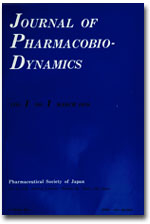Volume 5, Issue 6
Displaying 1-12 of 12 articles from this issue
- |<
- <
- 1
- >
- >|
-
1982Volume 5Issue 6 Pages 373-378
Published: 1982
Released on J-STAGE: February 19, 2008
Download PDF (592K) -
1982Volume 5Issue 6 Pages 379-387
Published: 1982
Released on J-STAGE: February 19, 2008
Download PDF (864K) -
1982Volume 5Issue 6 Pages 388-393
Published: 1982
Released on J-STAGE: February 19, 2008
Download PDF (647K) -
1982Volume 5Issue 6 Pages 394-402
Published: 1982
Released on J-STAGE: February 19, 2008
Download PDF (818K) -
1982Volume 5Issue 6 Pages 403-409
Published: 1982
Released on J-STAGE: February 19, 2008
Download PDF (760K) -
1982Volume 5Issue 6 Pages 410-417
Published: 1982
Released on J-STAGE: February 19, 2008
Download PDF (810K) -
1982Volume 5Issue 6 Pages 418-422
Published: 1982
Released on J-STAGE: February 19, 2008
Download PDF (548K) -
1982Volume 5Issue 6 Pages 423-429
Published: 1982
Released on J-STAGE: February 19, 2008
Download PDF (706K) -
1982Volume 5Issue 6 Pages 430-438
Published: 1982
Released on J-STAGE: February 19, 2008
Download PDF (848K) -
1982Volume 5Issue 6 Pages 439-444
Published: 1982
Released on J-STAGE: February 19, 2008
Download PDF (664K) -
1982Volume 5Issue 6 Pages 445-447
Published: 1982
Released on J-STAGE: February 19, 2008
Download PDF (405K) -
1982Volume 5Issue 6 Pages 448-450
Published: 1982
Released on J-STAGE: February 19, 2008
Download PDF (444K)
- |<
- <
- 1
- >
- >|
